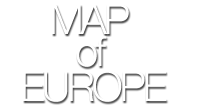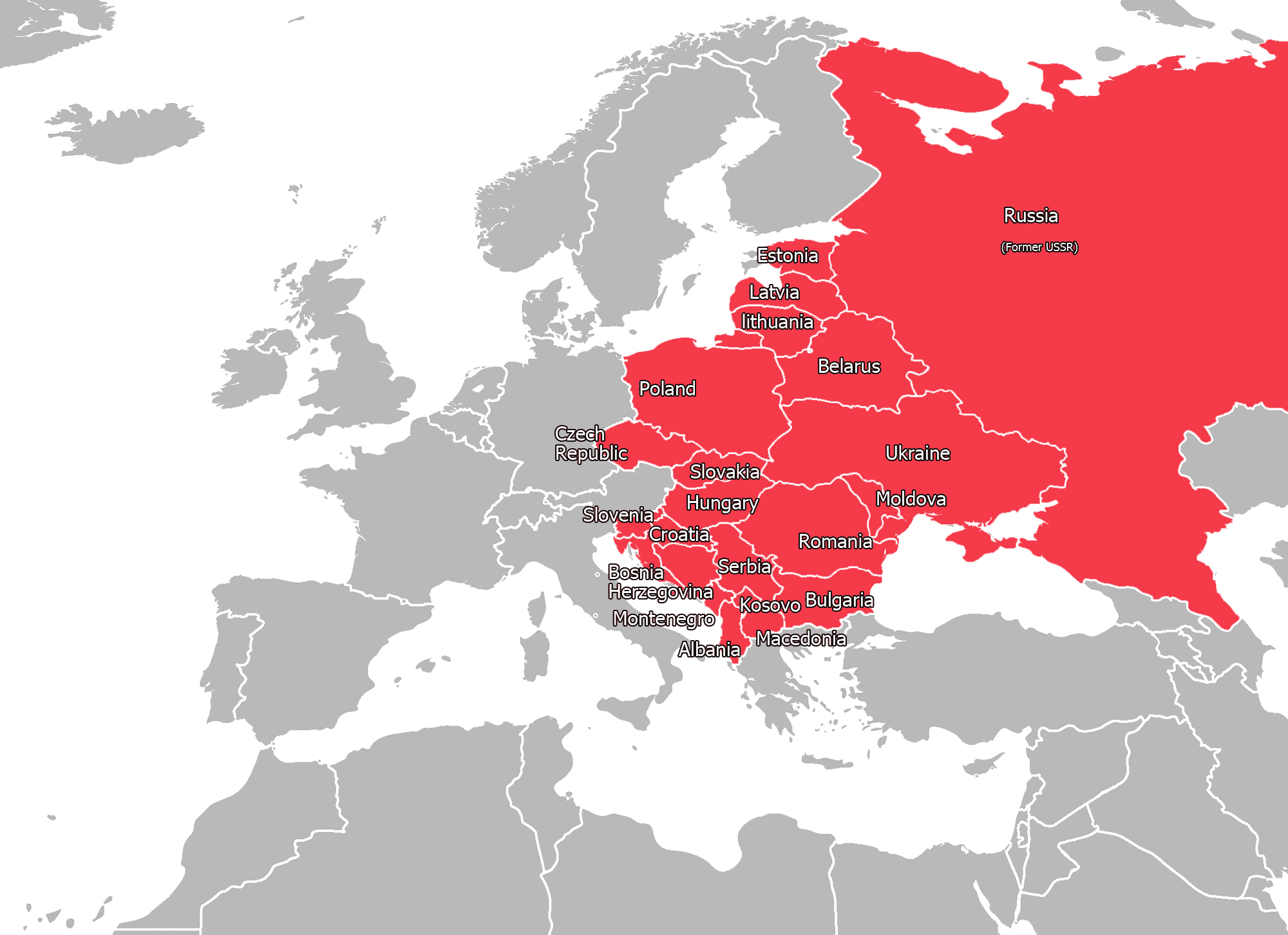The countries in Red above make up what is known as Eastern Europe.
Eastern Europe, a region rich in history and culture, is a fascinating area to explore. From the Baltic states in the north to the Balkan states in the south, Eastern Europe is home to diverse cultures, languages, and landscapes. This article delves into the intricacies of the Eastern European map, providing insights into the countries it encompasses, its unique features, and why it’s referred to as ‘Eastern Europe’.
What Countries are Included in Eastern Europe?
Eastern Europe is a term that encapsulates a number of countries, each with its unique history and culture. The region typically includes the following countries:
- Russia: The largest country in the world by land area, Russia spans Eastern Europe and northern Asia. It’s known for its rich history, diverse culture, and significant contributions to arts and science.
- Ukraine: The second-largest country in Europe, Ukraine is known for its Orthodox churches, Black Sea coastline, and forested mountains.
- Poland: Located in Central Europe, Poland is known for its medieval architecture and Jewish heritage.
- Czech Republic: Known for its ornate castles, native beers, and long history, the Czech Republic is a country steeped in culture and tradition.
- Slovakia: Bordered by five countries, Slovakia is known for its dramatic natural landscape and many castles.
- Hungary: Landlocked and located in Central Europe, Hungary is known for its thermal waters and the capital city of Budapest.
- Romania: Known for the forested region of Transylvania and the preserved medieval towns, Romania offers a glimpse into Europe’s historical past.
- Moldova: A small Eastern European country landlocked between Romania and Ukraine, Moldova is famous for its wine culture and scenic landscapes.
- Belarus: Known for its Stalinist architecture, grand fortifications, and primeval forests, Belarus offers a unique travel experience.
- Baltic States: The Baltic states of Estonia, Latvia, and Lithuania are known for their beautiful coastlines, historic cities, and unique Baltic culture.
In the Balkans, countries like Bulgaria, Serbia, Montenegro, Bosnia and Herzegovina, Albania, Macedonia, Kosovo and the European part of Turkey are also considered part of Eastern Europe. Each of these countries brings its unique blend of culture and history to the region, contributing to the rich tapestry that is Eastern Europe.
While these countries are generally recognized as part of Eastern Europe, it’s important to note that definitions can vary based on geopolitical, cultural, and historical contexts. Regardless of the exact boundaries, the countries of Eastern Europe each offer a unique and fascinating exploration of European history and culture.
We have a map of Western Europe also.
What is the Area of Eastern Europe Called?
The area of Eastern Europe is often referred to as the ‘Eastern Bloc’, a term that originated during the Cold War when the region was under the influence of the Soviet Union. However, the term ‘Eastern Europe’ is now more commonly used to refer to this region. The exact area of Eastern Europe is challenging to define due to varying interpretations of the region’s boundaries.
Why is Eastern Europe Called Eastern Europe?
The term ‘Eastern Europe’ is largely a geopolitical concept that has evolved over time. It was popularized during the Cold War when Europe was divided into East and West based on political ideologies. The Eastern Bloc, under the influence of the Soviet Union, was referred to as Eastern Europe. However, the definition can vary and sometimes it’s more related to geographical location or cultural similarities.
What is Unique About Eastern Europe?
Eastern Europe is unique in many ways. It’s a region where centuries-old traditions coexist with post-communist modernization. The region is home to diverse ethnic groups, languages, and religions. Its history is marked by empires, wars, revolutions, and periods of rapid social and political change. The region’s natural beauty, from the Baltic Sea to the steppes of Russia, is also a notable feature.
The European Union and Eastern Europe
The European Union (EU) has had a significant impact on the countries of Eastern Europe. Many Eastern European countries, such as Poland, Hungary, and the Baltic States, are now members of the EU, which has led to economic growth and increased political stability in these countries. However, some countries in the region, such as Ukraine and Belarus, are not EU members, reflecting the diverse political landscape of Eastern Europe.
Conclusion
Eastern Europe, with its rich history and cultural diversity, is a fascinating region to explore. Whether you’re interested in the historical significance of the Eastern Bloc, the cultural diversity of the region, or the political complexities of the EU’s relationship with Eastern Europe, there’s no shortage of intriguing aspects to delve into. As you explore the map of Eastern Europe, you’ll discover a region that’s as diverse as it is intriguing.

